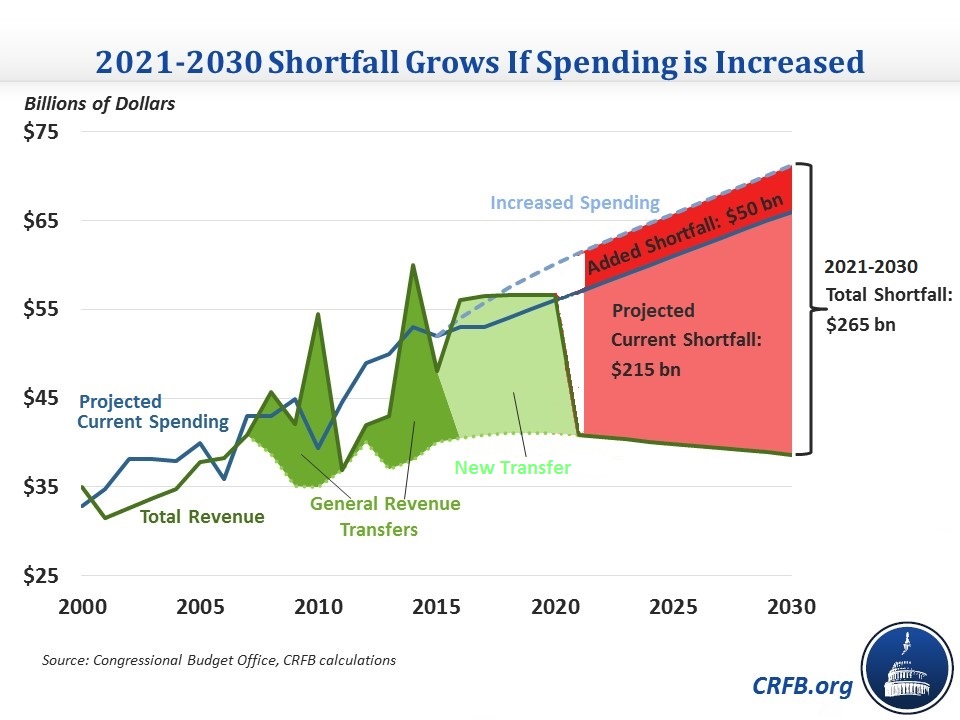Highway Conference Agreement is Both Gimmicky and Costly
Congressional negotiators this week released a conference agreement on highway spending authorization that will largely settle the issue of highway spending and funding for five years. However, the funding that the bill uses is largely a gimmick, and the spending increases contained in the bill will make future shortfalls larger. Though the bill is slightly less gimmicky than if it had simply adopted the House bill's offsets, it still falls far short of being fiscally responsible.
Overall, the Congressional Budget Office (CBO) estimates that the bill saves $71 billion over ten years to finance a $70 billion transfer to the Highway Trust Fund, which will keep the fund solvent through Fiscal Year 2020. At the same time, the bill would increase highway contract authority by $25 billion above the baseline over the next five years, or nearly $65 billion if that amount of spending were extended out for ten years. But there are problems with both the funding sources and the spending levels.
First, of the $71 billion of offsets, $53 billion comes from a reduction in the Federal Reserve's capital surplus account, which technically brings in revenue to the federal government but ultimately results in no change in federal debt. This version is slightly better than the House version (which claimed to save $59 billion) because the Fed is allowed to keep $10 billion in the account rather than emptying it, providing less of the savings than the House version did. To make up for the lost savings, the conference agreement reduces the Fed's dividend payments to member banks, lowering the rate from 6 percent to the ten-year Treasury note rate (currently around 2.2 percent and projected to reach 4 percent by 2018). This makes the conference agreement slightly more responsible, but still mostly reliant on a gimmick for its offsets.
Second, the increased spending in the bill will only make it more difficult for lawmakers to close the Highway Trust Fund shortfall in the future. We previously estimated that increasing spending by as much as the conference agreement does would increase the 2021-2030 shortfall by $50 billion on top of the already-existing $215 billion shortfall. The bill technically rescinds the increased spending in 2020, but it is unlikely that a future Congress would allow the 13 percent spending cut that would entail. Increasing highway spending is not necessarily irresponsible, but it is when lawmakers provide only temporary funding to do so. Instead, they should raise the gas tax or find another permanent financing source if they want to spend more.

Unfortunately, the agreement also takes a step back in another area by repealing the crop insurance savings contained in the Bipartisan Budget Act (BBA). This provision was one of the more significant entitlement reforms contained in the BBA, and its repeal will cost $3 billion over ten years. Though lawmakers had already promised to repeal the provision after the BBA passed, this is still a disappointing move.
Although this highway bill will be longer-lasting than the ones that have been enacted in the past several years, it continues the trend of papering over the shortfall temporarily with gimmicks and general revenue savings. And it exacerbates the problem by likely adding to future shortfalls with an increased level of spending. It would be clearly preferable to take the approach that our transportation plan and others have done to ensure a more lasting and responsible solution for the Highway Trust Fund.

